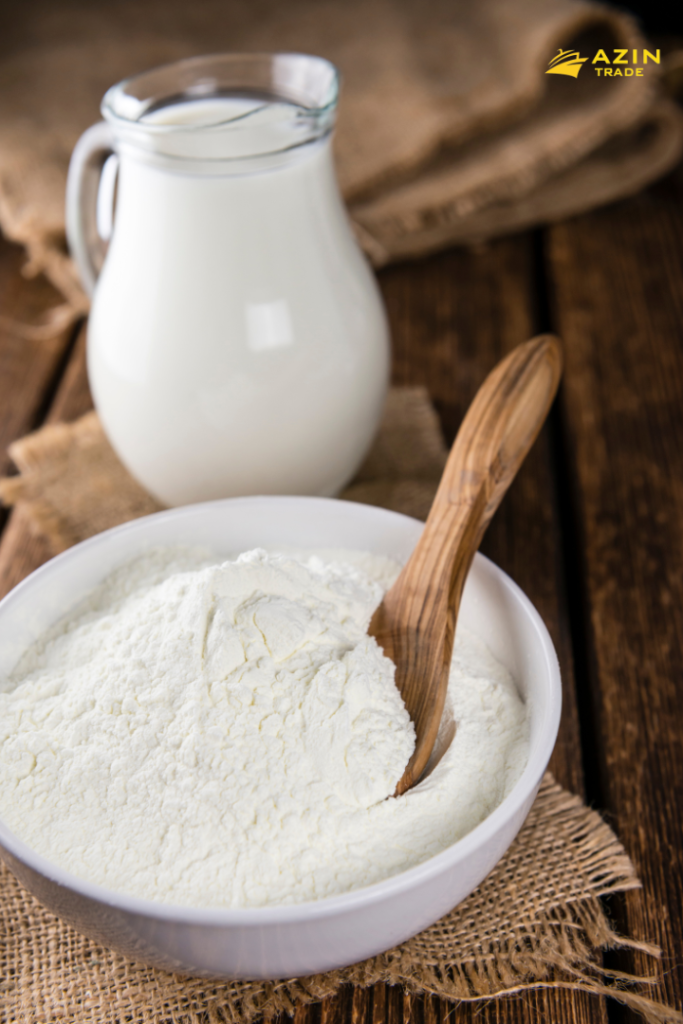
Whole Milk Powder
Whole milk powder
Comprehensive Guide to Whole Milk Powder
Introduction
Whole milk powder (WMP) is a versatile dairy product renowned for its long shelf life and wide range of applications. This extensive blog post explores the production process, nutritional content, uses in various industries, global trade dynamics, and the economic impact of whole milk powder.
1. Understanding Whole Milk Powder
- Definition and Production Process: Explain how whole milk is processed into powder form through evaporation and spray-drying.
- Nutritional Composition: Detail the nutritional profile of whole milk powder, including protein, vitamins, and minerals.
- Benefits: Discuss the health benefits and versatility of using WMP in culinary and food manufacturing applications.
2. Applications of Whole Milk Powder
- Food Industry: Explore how WMP is used in baking, confectionery, ice cream, and other food products.
- Beverage Industry: Discuss its applications in instant beverages, coffee mixes, and nutritional drinks.
- Culinary Uses: Detail how chefs and home cooks utilize WMP in recipes for sauces, soups, and baked goods.
3. Global Production and Consumption Trends
- Major Producers: Highlight countries that lead in whole milk powder production, such as New Zealand, the United States, and the European Union.
- Consumption Patterns: Analyze global consumption trends, regional preferences, and market dynamics.
- Trade Flows: Discuss international trade of WMP, key export-import partners, and regulatory considerations.
4. Economic Impact and Industry Insights
- Economic Contribution: Explore the economic significance of WMP production and trade on national and global scales.
- Industry Challenges: Discuss challenges faced by WMP producers, such as price volatility and competition.
- Future Outlook: Provide insights into future prospects for the WMP industry, including technological advancements and market trends.
5. Sustainability and Environmental Considerations
- Production Practices: Examine sustainable practices in WMP production, including waste management and resource efficiency.
- Environmental Impact: Discuss the environmental footprint of WMP production and initiatives to reduce it.
- Consumer Awareness: Explore consumer demand for sustainably sourced WMP and its impact on industry practices.
6. Quality Control and Food Safety
- Regulatory Standards: Highlight international standards and regulations governing WMP production and safety.
- Quality Assurance: Explain how WMP manufacturers ensure product quality through testing and inspection processes.
- Hygiene Practices: Discuss hygiene protocols essential for preventing contamination during WMP production.
7. Health Benefits and Nutritional Advantages
- Nutritional Value: Compare the nutritional benefits of whole milk powder with other dairy products.
- Health Considerations: Discuss the role of WMP in meeting dietary needs, particularly in regions with limited access to fresh milk.
- Research and Studies: Highlight scientific research on the health benefits of consuming WMP.
8. Culinary and Consumer Trends
- Consumer Preferences: Analyze changing consumer preferences for dairy products and the impact on WMP demand.
- Innovation in Products: Explore innovations in WMP-based products, such as fortified powders and specialty blends.
- Educational Campaigns: Discuss initiatives promoting WMP as a nutritious and convenient dairy option for consumers.
Conclusion
In conclusion, whole milk powder is a versatile dairy product with a significant impact on global food industries and consumer preferences. This blog post has provided a comprehensive exploration of WMP, covering its production process, applications across various sectors, economic implications, sustainability efforts, and future trends. For further insights into the world of whole milk powder and its role in the dairy sector, continue to follow our blog for updates and expert analyses.




